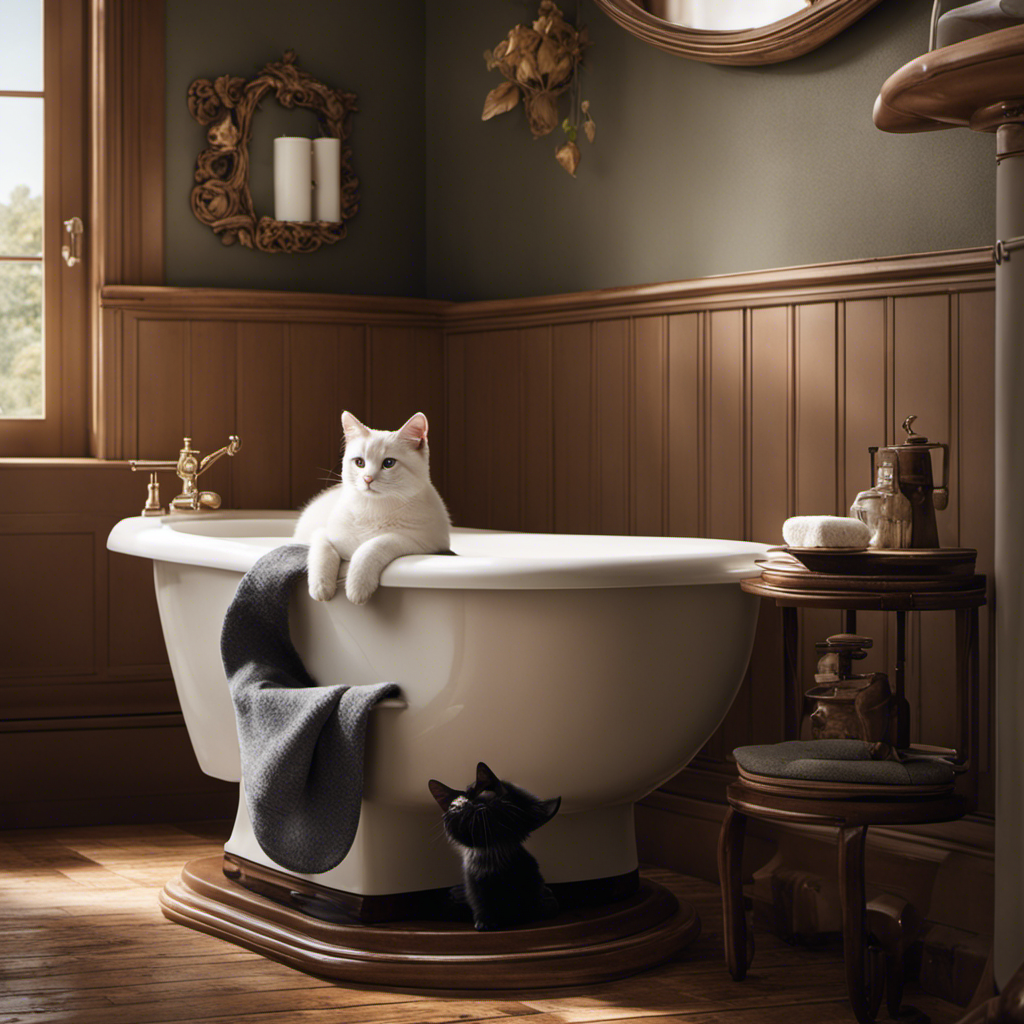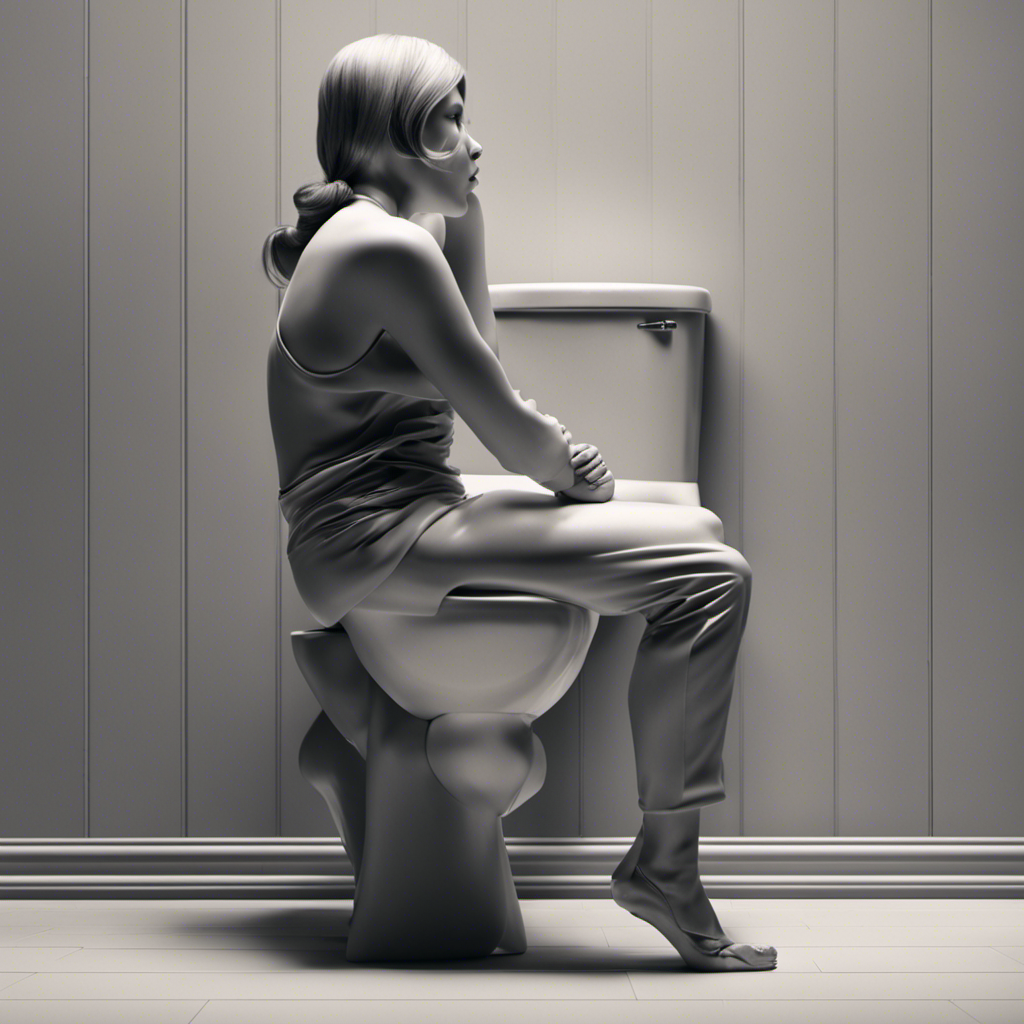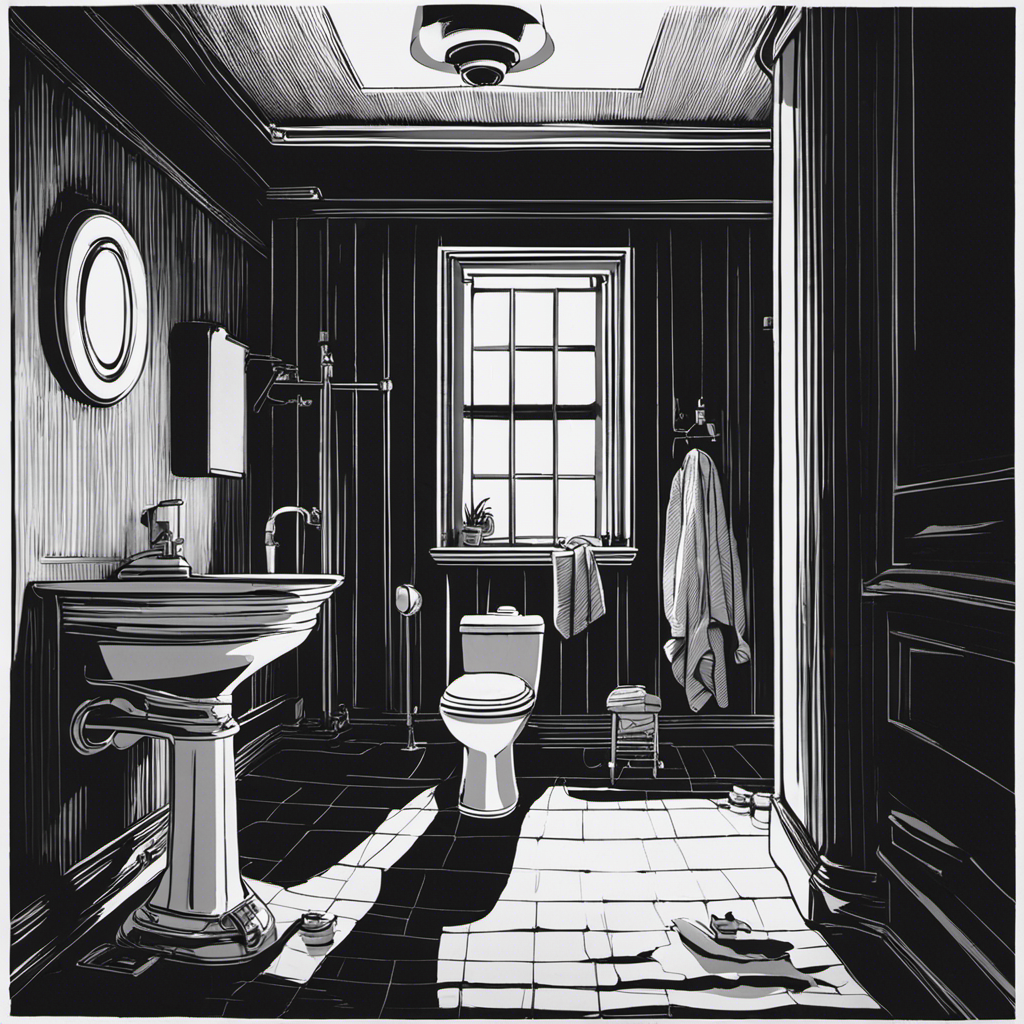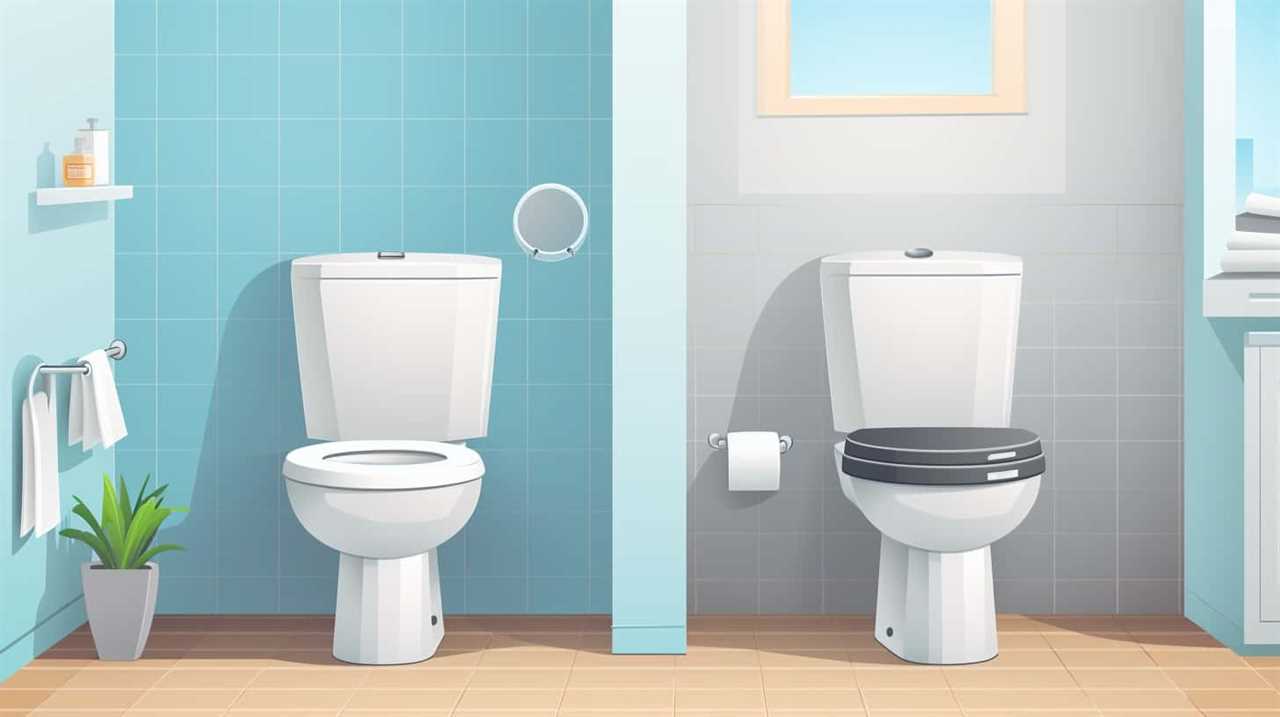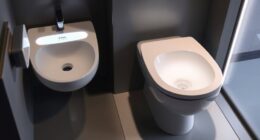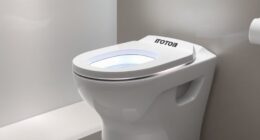Hey there, fellow feline enthusiasts! Fancy a revolutionary approach to litter box maintenance? Look no further!
In this guide, I’ll spill the beans on how to train your cat to use the toilet. Yes, you heard me right – the toilet! Say goodbye to pesky litter and hello to a cleaner, odor-free home.
I’ll walk you through the benefits, preparations, and step-by-step process, as well as troubleshooting and maintaining your cat’s toilet training success.
Ready to embark on this pawsome adventure? Let’s dive in!
Key Takeaways
- Toilet training cats can save money on litter and reduce odor in the home.
- Gradually reducing a cat’s dependency on the litter box and introducing a smaller litter box next to the regular one can help prepare them for toilet training.
- The litter box should be gradually elevated to mimic the height of a toilet seat, and a toilet seat adapter can be introduced once the cat is comfortable with the raised litter box.
- Troubleshooting common issues in toilet training includes reinforcing litter box use, addressing behavioral issues, and using positive reinforcement to encourage proper toilet usage.
Benefits of Toilet Training for Cats
Toilet training your cat has several benefits. It can save you money on litter and reduce odor in your home. By eliminating the need for litter boxes and the constant purchase of litter, you can save a significant amount of money. Additionally, you won’t have to spend time scooping and cleaning the litter box regularly. This chore can be time-consuming and unpleasant, so eliminating it can be a big relief.
Toilet-trained cats also tend to have fewer accidents. They learn to use the toilet consistently, reducing the chances of them going outside the designated area. This can help keep your home cleaner and more hygienic. Another advantage is that toilet-trained cats are less likely to track litter throughout the house. This can be a common problem with traditional litter boxes, as cats often carry litter on their paws and spread it around.
However, it’s important to consider the disadvantages of toilet training. Some cats may find it stressful or uncomfortable. It may not be suitable for all cats, especially those with medical conditions or behavioral issues. It’s important to assess your cat’s temperament and health before deciding to toilet train them. Additionally, there are alternatives to toilet training, such as using a litter box with a self-cleaning mechanism. These options may be more suitable for certain cats and their owners.
Despite these considerations, the benefits of toilet training can make it a worthwhile endeavor for both you and your furry friend. It can simplify your life, save you money, and improve the cleanliness of your home. Now, let’s discuss how to prepare your cat for toilet training.
Preparing Your Cat for Toilet Training
When it comes to toilet training your cat, there are a few key points to keep in mind.
One important aspect is eliminating their dependency on the litter box.
This can be achieved by gradually introducing the toilet as their new bathroom spot.
Eliminating Litter Box Dependency
You can gradually reduce your cat’s litter box dependency by starting with a smaller litter box and gradually removing it from the equation.
Toilet training techniques for cats have become increasingly popular as an alternative potty training method. The first step is to introduce a smaller litter box, such as a cardboard tray or shallow dish, placed next to the regular litter box. This will allow your cat to get comfortable with the new setup while still having the option to use the traditional litter box.
Over time, you can continue to decrease the size of the litter box until it is completely removed. This process helps your cat transition from the litter box to the toilet, eliminating the need for a litter box altogether.
It is important to be patient and consistent during this process, rewarding your cat for using the toilet and providing positive reinforcement.
Introducing the Toilet Gradually
Start by gradually introducing a smaller litter box next to the regular one. This will help your cat get accustomed to the idea of using a different surface for elimination.
Here are some toilet training techniques that can aid in the gradual transition:
-
Change the litter: Start by mixing a small amount of flushable litter with the regular litter. Gradually increase the amount of flushable litter over time, until your cat is comfortable using it exclusively.
-
Raise the litter box: Place the smaller litter box on a stable platform, gradually increasing its height to mimic the height of a toilet seat. This will help your cat associate the act of elimination with being at a higher level.
-
Introduce a toilet seat adapter: Once your cat is comfortable using the raised litter box, introduce a toilet seat adapter. This device allows your cat to eliminate directly into the toilet, facilitating the transition from litter box to toilet.
Step-by-Step Guide to Litter Box to Toilet Transition
Transitioning your cat from a litter box to a toilet can be done step-by-step. It requires patience, consistency, and a gradual approach. While there are alternatives to toilet training, such as using specialized litter boxes, teaching your cat to use the toilet offers convenience and eliminates the need for a litter box altogether. Even older cats can be trained, although it may take longer for them to adapt. Here is a step-by-step guide to help you with the transition:
| Step | Description |
|---|---|
| Step 1 | Place the litter box near the toilet |
| Step 2 | Gradually elevate the litter box |
| Step 3 | Introduce a training seat on top of the toilet |
| Step 4 | Gradually remove the litter box |
| Step 5 | Celebrate and reward your cat’s successful toilet usage |
Troubleshooting Common Issues in Toilet Training
As a professional cat trainer, I’ve encountered several common issues when it comes to toilet training cats.
One of the key points to discuss is the problem of cats eliminating outside the litter box during the training process.
Additionally, many cat owners may experience slow progress with training, which can be frustrating.
Another challenge that cat owners may face is when their cat outright refuses to cooperate with the training process.
Eliminating Outside the Box
If your cat is consistently eliminating outside the litter box, it’s time to address this issue. Here are some toilet training techniques to help you get back on track:
-
Reinforce litter box use: Ensure the litter box is clean and easily accessible. Use positive reinforcement, such as treats or praise, when your cat uses the box correctly.
-
Address behavioral issues: Cats may eliminate outside the box due to stress, anxiety, or territorial marking. Address these underlying issues to prevent inappropriate elimination.
-
Avoid common mistakes: Some common mistakes in toilet training include not providing enough litter boxes, using scented litter, or placing the litter box in a noisy or high-traffic area. Avoid these pitfalls to improve your cat’s litter box habits.
Slow Progress With Training
You may be wondering why progress with your cat’s training is slow. It’s important to remember that each cat is unique and may require different approaches when it comes to litter training.
When troubleshooting litter issues, it’s crucial to consider the type of litter, its texture, and scent. Cats can be picky about their litter preferences, so experimenting with different options might be necessary. Additionally, it’s important to address any underlying health issues that could be causing discomfort or pain during elimination.
Overcoming resistance from your cat may require patience and consistency. Gradually introducing the litter box and providing positive reinforcement when your cat uses it can help reinforce the desired behavior.
Cat Refusing to Cooperate
Don’t give up on your cat if they’re being uncooperative during the training process. It’s important to understand that cats can have behavior problems that may hinder their progress. Here are three alternative training methods to try:
-
Positive reinforcement: Use treats or praise to reward your cat when they display desired behaviors, such as using the litter box or following commands. This will help motivate them and make the training process more enjoyable.
-
Environmental enrichment: Provide your cat with stimulating toys, scratching posts, and vertical spaces to explore. A happy and mentally stimulated cat is more likely to cooperate during training.
-
Patience and consistency: Cats are creatures of habit, so it’s essential to establish a consistent routine and stick to it. Be patient and understanding, as some cats may take longer to learn new behaviors.
Maintaining Your Cat’s Toilet Training Success
To maintain your cat’s toilet training success, it’s important to regularly clean the toilet and provide positive reinforcement.
Cleaning the toilet regularly ensures that it remains a clean and inviting space for your cat to use. This not only helps maintain progress but also prevents accidents from occurring.
Accidents may happen during the training process, but it’s crucial not to punish your cat. Instead, focus on redirecting their behavior and providing positive reinforcement when they use the toilet correctly. This can be done through praise, treats, or even a favorite toy.
By consistently reinforcing positive behavior, you can help your cat maintain their toilet training success and minimize accidents.
Tips for Training Multiple Cats to Use the Toilet
When training multiple cats to use the toilet, it’s important to establish a routine that accommodates their different needs and preferences. Here are some tips for training multiple cats together:
-
Gradual introduction: Introduce each cat to the toilet training process individually before bringing them together. This allows them to feel comfortable and reduces potential conflicts.
-
Separate litter boxes: Provide each cat with their own litter box during the training period. This ensures that they have a designated space to eliminate and reduces competition.
-
Patience and consistency: Be patient with each cat’s progress and consistently reinforce positive behaviors. Reward them with treats or praise when they successfully use the toilet.
Common mistakes to avoid in toilet training multiple cats:
-
Rushing the process: Each cat will progress at their own pace, so avoid rushing them. Give them time to adjust and learn.
-
Neglecting individual preferences: Cats have different preferences, so consider their individual needs when training. Some may prefer certain litter or toilet seat styles.
-
Punishing accidents: Accidents happen during the training process. Avoid punishing your cats for accidents as it may create anxiety and hinder their progress.
Conclusion
In conclusion, toilet training your cat is not only a convenient and hygienic option, but it is also a rewarding experience for both you and your furry friend.
By following the step-by-step guide and troubleshooting any issues that may arise, you can successfully transition your cat from a litter box to the toilet.
Imagine the joy of never having to clean a litter box again. Instead, you can witness your cat confidently using the toilet like a pro.
So why not embark on this journey and give your cat the freedom they deserve?
